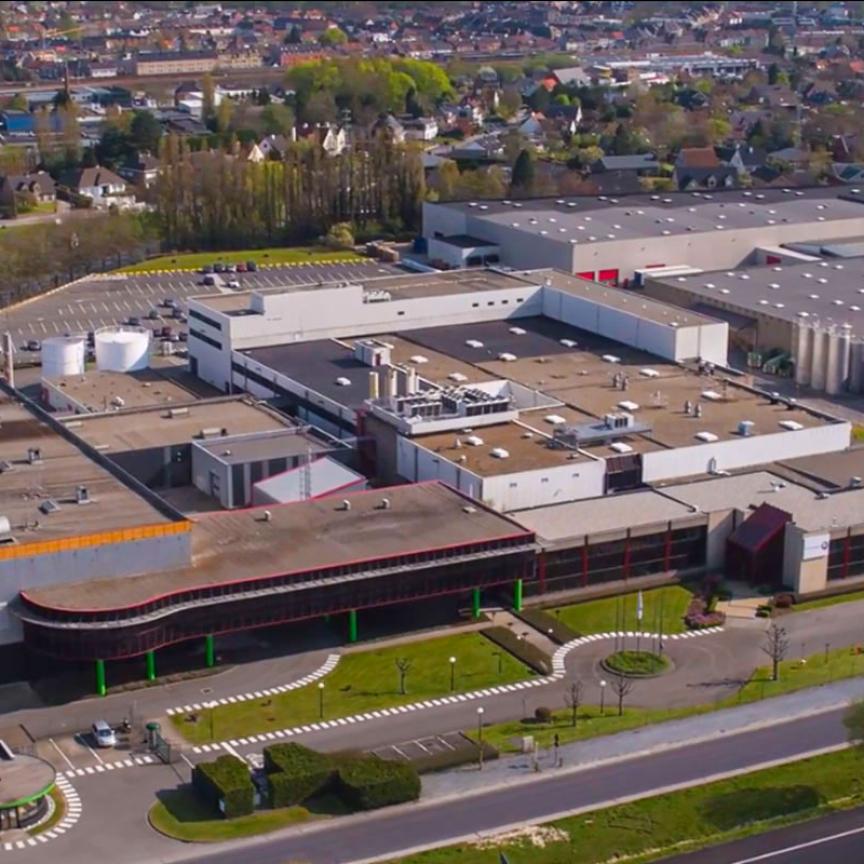A cooperation of TRIOPTICS GmbH and MEKRA Lang ensures greater safety in road traffic: When MEKRA Lang, a leading manufacturer of vision systems for the commercial vehicle industry needed a production solution for the cost-efficient, automated production of a new high-performance camera platform, it found a perfect partner in TRIOPTICS.
Driver assistance systems for commercial vehicles is MEKRA Lang’s core business, and the company knows that these systems need powerful and robust cameras. The need for such systems is only too clear – according to the ADAC’s latest figures, a total of 4,314 pedestrians and cyclists were involved in collisions with trucks in 2019, with 132 of these proving fatal. Estimates put around one-third of such fatal collisions as accidents during turning manoeuvres.
Improved all-round visibility, combined with intelligent driver assistance systems, could help to remedy this situation. But such a driving assistant needs great eyesight in the form a a robust, highly accurate camera system, such as the latest innovation from MEKRA Lang.
Such camera systems are not currently designed to replace mirrors, but to complement them by facilitating a complete, all-round view. A well-known European truck manufacturer, for example, has the MEKRA Lang platform camera installed as standard in the mirror base on the passenger side, in order to monitor the blind spot. The truck can be equipped with up to eight cameras, with up to four views displayed simultaneously on the monitor.
ProCamⓇ Align Smart success story
Rapidly increasing demand for this system meant growing production figures, and it is this which brought MEKRA Lang and TRIOPTICS together. Jens Stürzenhofecker, Deputy Team Leader of Industrialisation at MEKRA Lang explains: “We ramped up the assembly of camera modules for our platform camera from a few hundred cameras to many thousands per-year using the ProCamⓇ Align Smart system supplied by TRIOPTICS.”
In order to meet as many customer requirements as possible, a modular system was developed to allow efficient customisation. Different variants include optical parameters, software, image signals, housing designs, and mechanical and electrical interfaces to the vehicle.
Active alignment for optimised image quality
The first step was to pre-assemble the optics and the lens holder. Then, the TRIOPTICS active alignment system automatically sets the focus of the assembly correctly and fixes it with adhesive.

Active alignment of optics and sensor for best possible image (Credit: TRIOPTICS)
Dirk Seebaum, Business Unit Manager of Automation at TRIOPTICS explains: “One key challenge lies in the increasing demands on the quality of the images. Higher resolutions require larger pixel counts, often accompanied by smaller pixel dimensions and decreasing depth of field of the lenses. Active alignment systems must meet this challenge.”
Even with a perfect lens system, the image quality of a complete camera will deteriorate if the lens is poorly aligned with the sensor. This effect is reinforced by the camera modules’ increasing power and the higher resolution of the sensors. The most important production step is the high-precision alignment of the optics relative to the camera sensor in six axes.
Active alignment with sub-micron resolution is even suitable for wide-angle optics with a field of view (FOV) of up to 170°. Continues Seebaum: “With our ProCamⓇ Align Smart measuring and production device, TRIOPTICS offers an extremely flexible solution for the active alignment and production of high-precision camera systems. Active alignment technology is ground-breaking in terms of optimising the image quality of camera modules and is an established and efficient manufacturing process for the production of high-end camera applications.” Thanks to having configuration files on hand, a variant change can be completed in less than a minute, so customised set-ups can be produced cost-efficiently.

Checking the results of the ProCam® software (Credit: TRIOPTICS)
High-quality optical components for commercial vehicle cameras
Cameras for commercial vehicles require very robust, high-quality components that can withstand the high mechanical stresses during work. MEKRA Lang’s camera system not only answers this need, but it is also flexible in terms of its application: it can be used for blind spot monitoring on trucks; as a reversing camera to monitor the loading space on combine harvesters, and more.
The Coronavirus pandemic highlighted the vulnerability of supply chains, so MEKRA Lang wanted to negate this in the future for customers by producing the camera module itself. In addition, the necessary vertical integration could only be achieved if production, process and competence are located on site, so the company was looking for a suitable supplier partner for a camera production system, preferably from Germany. TRIOPTICS was actually sourced via an online search.
A perfect partnership for camera module production
The teams from both companies quickly hit it off, and the active alignment system was commissioned just under three quarters of a year after placing the order. Thanks to the partnership and expertise of TRIOPTICS, MEKRA Lang now manages the production of camera modules using active alignment, ideally positioning the firm for the future and allowing it to manufacture the camera modules itself.

ProCam® Align Smart device tested and approved by MEKRA Lang engineers (Credit: TRIOPTICS)
Stürzenhofecker recognises the partnership as an excellent match. He says: “Specifically, we saw a clear advantage in the fact that TROPTICS comes from optical measurement technology. The competencies in the field of technical optics and precision mechanics offer a significant knowledge advantage.”
TRIOPTICS is constantly developing and improving these technologies, and companies such as MEKRA Lang will continue to benefit. The next active alignment system has already been ordered from TRIOTICS and is under construction for MEKRA Lang to enable another camera production line.
More information
Find out more information about TRIOPTICS’ solution for the active alignment and production of high-precision camera systems.


